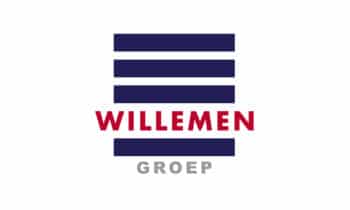
The development of new types of cement with a reduced carbon footprint
The cement industry on the move
The Belgian cement industry's effort to reduce the environmental impact of cement is not new, but it is gaining momentum. The challenge is to do this while maintaining the technical performance of cement and concrete. One way to achieve the goals of climate neutrality by 2050 is to reduce the clinker content in cement.
Clinker is the basic component of cement and is obtained by heating mainly limestone in a cement kiln to 1,450°C. Apart from CO2 emissions from the fuels, CO2 is also released during the chemical decomposition of limestone into calcium oxide, at about 850°C. This chemical reaction causes most of the total CO2 emissions. The rest of the CO2 emissions come from heating the materials going through the kiln.
New cements
After the process in the kiln, substitute materials are often added to the clinker before it is ground into the fine powder we know as cement. Producers reduce the proportion of clinker in the cement, thus immediately reducing CO2 emissions. To go down this path, new cements, that is, new recipes or compositions, are inevitable. The substitute materials for clinker, such as fly ash, blast furnace slag or limestone fillers are mixed with the clinker and ground without being heated in the kiln and thus without emitting CO2. However, the closure of coal-fired power plants and the gradual phasing out of steel blast furnaces lead to scarcity of fly ash and decreasing availability of blast furnace slag, forcing the cement industry to use alternative secondary raw materials.
The most commonly used cement in Belgium today is "low carbon" blast furnace cement CEM III/A, with between 35 and 64% clinker, supplemented by blast furnace slag. Only the Belgian CEM III and CEM V cements have a lower clinker content than 65%. For information, the average proportion of clinker in Belgian cement in 2020 was 63.8%, while the European average is about 77%.
New standards
A new part of the cement standard was published in 2021, Part 5: NBN EN 197-5, which describes the new cement types CEM II/C-M and CEM VI. Cement types CEM II/C-M have a clinker content of 50 to 64%. The CEM VI type is called "low carbon" and contains even less clinker, between 35 and 49%. And since mid-2023, there is even a 6th part, NBN EN 197-6, which deals with cement with fine particles derived from recycling. Although these last two standards are not harmonized; therefore, no CE marking will be possible for these types of cements but the voluntary BENOR mark will be possible.
The cements in the standards are suitable for general use. This means, among other things, that they do not adversely affect the durability of concrete. But in addition, the specific fitness for use must also be demonstrated for certain applications (usually in function of the environmental classes according to the concrete standards, which take into account the deterioration due to carbonation, frost, rain, sea or road salt as well as chemical attack). Since 2020, the large-scale, prenormative research project NEOCEM, driven by the cement industry, has been running in cooperation with the three research centers OCCN, BUILDWISE and OCW. The aim of the research is to demonstrate the specific suitability of 4 main types of cement with new materials: CEM II/B-M, CEM II/C-M, CEM V and CEM VI, where the secondary materials are blast furnace slag and/or limestone fillers and/or a new material such as calcined clay. For those types of cement, one certain percentage of the slag, which varies from one type to another, is each time replaced by limestone fillers or calcined clay. The project is already so far advanced that some of the new cements have been included in the new version of the Belgian concrete standard NBN B 15-001, which will be published soon. In the next project NEOCEM II, cements with recycled fine particles according to NBN EN 197-6 will be studied. These studies will allow the new cements to be brought to market more quickly and thus meet the challenges of tomorrow.




